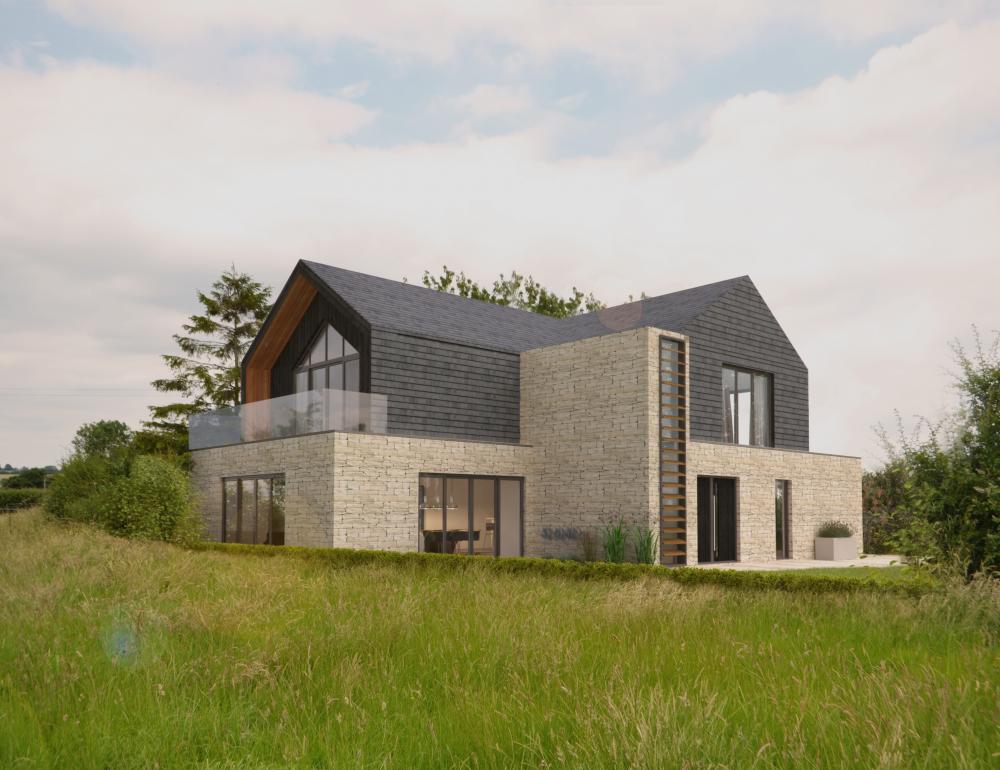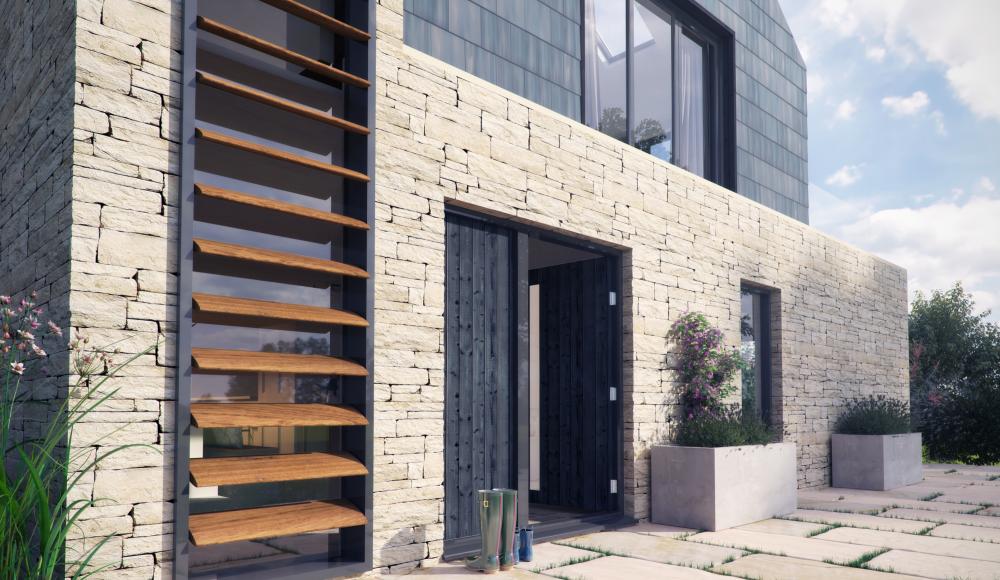Leaderboard
Popular Content
Showing content with the highest reputation on 09/13/17 in all areas
-
Plasterboard has a higher mass heat capacity than concrete, so if it's located where that might be useful, say in terms of increasing decrement delay, then it would be useful. In fact, if you want to improve the heat capacity of the internal structure of the house, double boarding a timber frame with plasterboard will probably do a better job than having block walls. Only around the first 100mm, if that, of external wall thickness has any appreciable effect, usually, in terms of storing useful heat over the range that may help keep the house internal temperature stable. The higher the heat capacity of the inner layer the better, and plasterboard has a mass heat capacity that is around 23% higher than concrete. It's one of the points that illustrates how daft the false notion of "thermal mass" is. The implication with this unmeasurable property is that mass = heat capacity, which is nonsense. 1kg of brick has a heat capacity of around 840 J.kg.K 1kg of concrete has a heat capacity of around 880 J.kg.K 1kg of gypsum plasterboard has a heat capacity of around 1090 J.kg.K 1kg of wood (or compressed wood fibre) has a heat capacity of around 1200 to 2900 J.kg.K 1kg of water has a heat capacity of around 4181 J.kg.K In the above list, the higher then number, the greater the amount of heat the material will store for a given temperature change. In other words, if you want to store heat in a building in order to help stabilise its internal temperature, by increasing the mass of the building, then you're better off using something other than brick of concrete, as on a heat stored per unit mass basis brick or concrete is far from being very useful, lightweight concrete even less so.3 points
-
I say no, but I don't know the labour rates where you are. All the testing is done, so the "testing" bit of a normal consumer unit swap is done. The replacement CU will cost less than £100. It would only be a couple of hours work to swap it, but let's be generous and allow half a day (the new CU will come with all the stickers) So he's saying £400 for half a days work or £800 per day. I somehow suspect labour rates are not that high where you are?2 points
-
Get a 12" long piece of 32mm waste pipe, a camera, stopwatch and piece of purple fabric. Ask Debbie to hold the camera and the stopwatch. Cut a hole in the fabric and place it over your head with the hole over your cheek. Place your mouth firmly over the pipe and then put the pipe on the wall test patch. On Debbie's count, deep breath and blow hard into the tube. At 10 seconds, Debbie should take a photo of the colour of your cheek against the cloth.... Post the photos on here and we can provide the expert view of which is best based upon the colour differences.......2 points
-
Good evening all, I’ve been lurking around this forum for a while digesting all the great information that exists. There really are some knowledgeable and eloquent people posting here, a refreshing change to some other sites! My project is slowly getting started and I will endeavour to keep a blog or at least a photo diary of the progress. The property is a stone semi detached cottage from around 1850. Twice extended early 1900’s located on the outskirts of Dundry village, 4 miles south of Bristol city centre. House has been empty for 6 years and is need of deep renovation. Extension number 1 at the rear of the building increased the footprint by nearly 100% and added two additional rooms upstairs but with pitched ceilings and head height of only 1.0m at the extreme. Extension 2 was a barn joining the side of the house. Structurally unsound this has already been demolished. Attached elevations and floor plans are almost ready to be submitted for PP. The finished property will be 3 bed house with roof terrace taking in the amazing views. Plus 1 bed self contained annexe. The property is not listed or in a conservation area, however it is greenbelt land. Lesser horseshoe bats have occupied the roofspace and although almost completely gone the property is regarded as a roost and we will be requiring a licence from Natural England prior to any roof works take place. Like many of you I have an amateur interest in low energy homes and as this is my second fixer upper I will be doing it ‘properly’ and much more thoroughly this time. (Last time was a terrace house, I was 5 years younger with less knowledge, a tight budget and limited time) As there is opportunity for such a deep renovation I have considered working towards EnerPhit standards but I feel that is too large a step. More realistically and attainable would be AECB Silver certification. The only parts of the existing building to be kept are the 3 external stone walls and possibly first floor joists to the front of the house. (Perhaps I should have bought a plot!) Wishlist, in no particular order EWI Woodfibre board such as Warmshell to existing walls Windows –Aluclad sash. Fixed sliders where possible Aerated glass foam for ground floor insulation in existing house Warm roof construction. Although provision has to be made for letterbox bat access into loft space so loft insulation will also be necessary ICF for new extension. Limited on wall thickness due to proximity of road. MHRV – Situated in loft space unfortunately ASHP – For DWH and UFH. Hopefully modelling will confirm space heating unnecessary upstairs. However if there is any doubt provisions will be made! Clay plaster used internally including tadelakt in main bathroom Loxone home automation for controlling lighting, ufh thermostats, access security and audio PV array on ESE roof Rainwater harvesting on WNW rear roof Any initial thoughts, pointers very much appreciated.1 point
-
So our house is pretty well complete from an insulation and airtightness perspective. There are still a few outstanding items that will improve it later, but it is basically there. With the trees to the south of us in leaf, there is little solar gain, perhaps some in the afternoon through the west facing windows. Consequently it seems to sit pretty much averaging the outside temperature (over many days) and only changing temperature inside slowly. In the spring we had a hot spell and the inside of the house remained cool without overheating, remaining at below outside temperature for many days. I took that as a good sign. Summer has ended abruptly here. It's 10 degrees, cloudy most of the time, wet and windy and has been for some time. the house remains at about 15 degrees inside (still cooling down) Now (and this is where I think it's not performing as expected) I decided to introduce some heat to the house. Before I post any details, I have input the house size, U values etc into Jeremy's spreadsheet and with a 5 degree difference between inside and out, we should have a heating demand of 376W just to maintain the present temperature. The permanent heating (ASHP and UFH) is not ready yet so I have a little plug in fan heater in the house now. With no thermostat on it I only run it when I am in the house. It's only a 1KW heater and from the spreadsheet 376W of that is just replacing the heat lost, so 624W should be heating the internal fabric of the house up. Over the last 24 hours that has been on a total of about 10 hours, so 6.2KWh of heat has been pumped into the house. That has only raised the internal temperature 1 degree. I read on this forum if Jeremy runs his hoover too long the room overheats. If someone lights a 3KW WBS then in an hour (3KWh of input) the room has overheated and can't be used for days. So why has 6KWh of heat input to my house had negligible effect? I am not concerned. Yet. It is the heat required to maintain equilibrium that matters, not how much it takes to heat the fabric of the building when it is cold. but it is not "ringing true" with what I read here about modest amounts of heat input seriously overheating a well insulted house very quickly. For further information. the house is plasterboarded upstairs but no doors are yet on. Downstairs it is not plasterboarded so in effect one big room. The MVHR is on, and appears to be working. Outside air is 10 degrees. Extracted air from the rooms (measured at the plenum box) is 15 degrees, and supply air also measured at the plenum box measures at 15.2 degree so somehow very slightly higher than extracted air. This at least shows the heat recovery is working.1 point
-
We (or rather, our architect) will be submitting for planning permission from North Dorset Council later this week. Cue 8 weeks of nail biting. It seems to have taken a long time to get to this stage, but it's worked out okay in terms of timing on finances and bats as well as a couple of other things, so the enforced exercise in patience has done us no harm. The plot is quite long and narrow, roughly running north south with nice views in all directions apart from due south where there are a couple of neighbouring cottages. Not that they look bad, they're just not as pretty as the countryside. The existing dwelling is a 3 bedroom Woolaway type bungalow, built sometime around 1970 and we want to replace it with a 2 storey, 3 bedroom contemporary build. As it's just the two of us and the cats, we want larger rooms rather than more rooms. Nothing is decided in terms of building system yet - all that and quotes come next, along with everything else that's involved, so I'll be putting plenty of questions on the forum, I hope, in the near future as this is such an invaluable resource. Here's a photo shop mock-up of the proposed house and some floor plans. 1120 - 103DIMS - Bagber Farm Cottage - PROPOSED GROUND FLOOR.pdf 1120 - 104DIMS - Bagber Farm Cottage - PROPOSED FIRST FLOOR.pdf1 point
-
1 point
-
@pocster Still a little difficult to comment because I am surmising what it is from Google Streetview and the published database of all HMOs in the area (bl***y moronic Council publishing a target list for criminals and squatters), however it appears to be a normal medium sized terrace converted into a HMO with loft rooms to give perhaps 5 letting rooms on 3 floors. For that IMO £500 may be about right for a full inspection plus some remedial and including an Electrical Certificate since in any sensible world (and Bristol is in the sensible world) that should be at least 1-1.5 days time for labour for a single 'lecky assuming no major material costs, which would be adequate for an inspection of such a property and some minimal repair. It is not a big house. So I would kick your electrician into touch, and get another sensible one to do the CU and reinspect as part of the job - showing them the original report to prove that the inspection work needed may be minimal. You need to use your skill and judgeent to source one, but there are landlord directories around or perhaps try the RLA/NLA or recommendations. But first talk to the HMO Jonnies at the Council to check their requirements on the points raised and what they think. You may not get very far because using HHSRS is a 2-3 day course, which then lets them understand the system for every issue in the world and everything from trip hazards to asbestos to damp, and interpret the hundreds of pages of supporting documentation. Then they plug it into a huge spreadsheet built on not that much evidence and decide your fate like a Georgian Magistrate with his finger in the air. I am still waiting for someone to challenge it based on lack-of-specialist-expertise of the enforcer, but holding Councils to account is a game for stinking rich mugs. Best of luck. Ferdinand1 point
-
You could always buy the reset tool from Screwfix and then return it "as it didn't work with your controller......"1 point
-
It may well be that whatever fault caused the unit to need re-gassing is still present, or it could be that the unit has just been incorrectly filled, perhaps with too much, or too little, refrigerant, and is consequently tripping because it's under/over pressure. It could be that the sensor is faulty, but given the history of the unit having been run very hard, with settings that will have caused the 4 way valve to operate frequently and the compressor to run for long periods of time, I suspect that there's something else going on. The same (or extremely similar) compressor and primary circuit is used in a range of Carrier air conditioning units, so a good air con engineer, who's familiar with Carrier equipment (most should be, they are a pretty big company; Willis Carrier was the inventor of air conditioning) might well be able to get to the bottom of the fault. Best to tell whoever you can find that although the unit is badged Kingspan, it is really a Carrier 30 AWH series: http://www.carrieraircon.co.uk/product/30awh-004-015-aquasnap-plus-heat-pumps-4-15kw/1 point
-
1 point
-
Yes but then a single 30mA rcd for everything raises other issues (hence the compromise of dual rcd split boards that "solve" that issue but are still a compromise.) I would just update the other socket circuits and shower to an rcbo, unless it's a particularly unusual board where the rcbo's are hard to obtain or very expensive. @pocster Still waiting for a piccy of the CU But this guy is going to charge loads of dosh to slap some stickers on. Another thing that "annoyed" me is he noted poor earth on a class 2 fitting, even mentioned "loose terminal" so he must have opened the fitting, seen the loose terminal, and put it back together thinking "that's another job ££££££" FFS If I opened a fitting and saw a loose earth terminal I would just tighten it and put the item back together. Perhaps that's why I am short of money? One could argue if he indeed had found a loose terminal and put it back together knowing it was defective then in the event of someone then getting killed by that item he would be guilty by his negligence? I am not prepared to take that chance and if I find a loose terminal I bloody well tighten it.1 point
-
If you can borrow a Command Unit, then you can hook it up with four core cable to the external unit and get a lot more information as to what is going on. The snag is that the Command Unit is quite expensive, and often wasn't supplied as standard with some systems. Attached is a copy of the Carrier Command unit manual that give some insight as to both the diagnostic information available and, more importantly, the system settings. It is the latter that are usually the cause of poor performance, by default Kingspan (and others that badged these same units) didn't seem to re-programme them for UK conditions very well, if at all. Without the Command Unit the unit cannot be reprogrammed, AFAIK. Carrier Controller Installation Manual - 33awcs1.pdf1 point
-
Do you have the Command Unit fitted? If so, you can enter diagnostic mode and look at the parameters and fault codes on the screen, rather than on the flashing fault LED, which makes things a LOT easier. The Carrier Command Unit look exactly like this (but with a Kingspan logo on bottom of the front cover, rather than the Glow worm logo on this one): Do you have the external LED diagnostic extension box fitted, or are you looking at the LEDs on the internal board? If the latter, then pages 22, 23 and 24 of this manual (which may be the same as you already have) might help: Kingspan_Aeromax_plus_Installation.pdf1 point
-
1 point
-
1 point
This leaderboard is set to London/GMT+01:00







